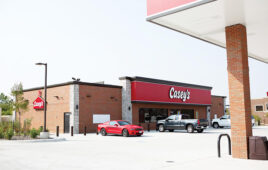By: David Hochman, founder of DJH Marketing Communications Inc.
As is (sometimes painfully) obvious, today’s C-Store customer enjoys the benefits an ever-expanding number of choices with regards to their C-Store visits. Most locations drawing from the same pool of employees and categories, and pricing competition just creates a “race to the bottom” environment. One of the most effective methods for influencing the C-Store customers’ decision-making process is to develop a “relationship” with customers; a relationship based mainly one thing: trust.
Every customer interaction is an opportunity to earn (or lose) the customer’s trust. They trust that they won’t be sold faulty, counterfeit or even dangerous products. They trust that their financial information via credit and debit card-based transactions will be kept secure. They trust in the C-Store retailer to make sure that their physical security is treated as a priority, and that the retailer follows best practices to protect the customer and his property from theft, damage or worse. They trust that the owner carries the proper amount of insurance and is up-to-date with payments so that expeditious compensation occurs if some unforeseen event does happen.
Despite the best intentions, and even when responsible parties come up with most thought-out, detailed action plans for managing a crisis, it is likely that at some point in the lifetime of the store’s existence, some kind of situation will arise that creates a harmful or risky situation for the customer, the end result ultimately being that years of accumulated trust in a brand can disappear. Decades of trust and goodwill can evaporate in less than the amount of time it takes for a consumer to snap a photo on their phone, compose a 140 Word Tweet, and hit the send button.
However, it’s not as though owners and managers cannot take a proactive stance towards crisis management on all fronts. According to Jon
Goldberg, the founder and chief executive of Reputation Architects (www.reputationarchitects.com), a NJ-based crisis management and communications advisory firm, one of the first actions necessary is to “undertake a deep analysis of all possible product, customer, supply chain and workplace vulnerabilities, and expose the complete inventory of issues and crises the organization conceivably could encounter so they can be planned for effectively.”
Instead of just zeroing in on what could be perceived as the most obvious risks for a C-Store, i.e. criminal act, data privacy and cybercrime, and product safety concerns, Goldberg advises that if possible, take a “holistic approach to ensure that the process considers potential litigation exposures, how legislative and regulatory changes could impact the company’s business and markets, and any emerging technological, social, economic and demographic trends that could lead to scrutiny of its policies or practices.”
At the end of the day, in the majority of crisis situations, it’s not the crisis event itself that ultimately destroys the trust between C-Stores and customers. Grown adults (mostly) will accept the fact that C-Store, just as any organization staffed with humans, ultimately can only control external events up to a point at which the randomness of the universe takes over.
Which leads to the final and most crucial issue with regards to crisis management for C-Stores, which is: the actual event that caused the crisis isn’t usually at the root of the worst of the damage to the store’s reputation, its how the organization is viewed to have responded and reacted to it. A perception – rightly or otherwise – that the store’s executive leadership was caught unprepared, incompetent or evasive – will become a fact, and the lingering narrative will damage the trust that stores have with customers for years to come.
Dave J. Hochman is the founder of DJH Marketing Communications Inc., a PR, Content & Social Media agency. DJH has serviced numerous clients in the C-Store space, including Loomis, RelaxZen, FireKing. Contact him at [email protected]




